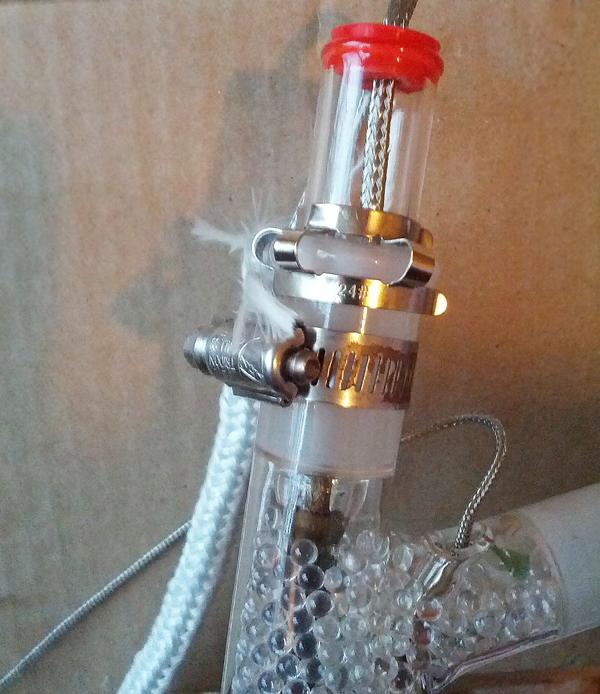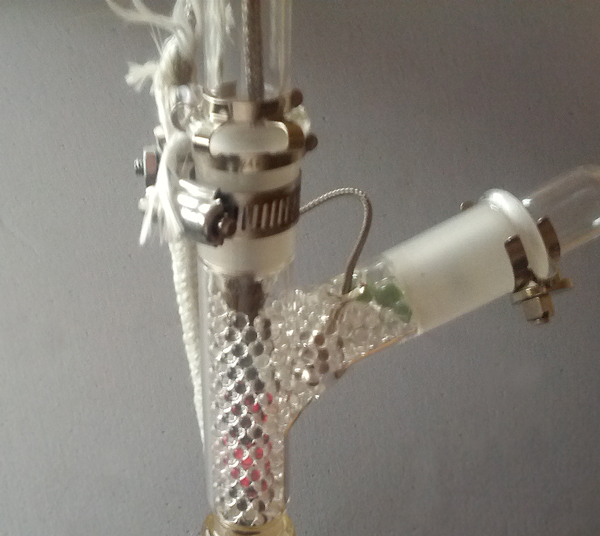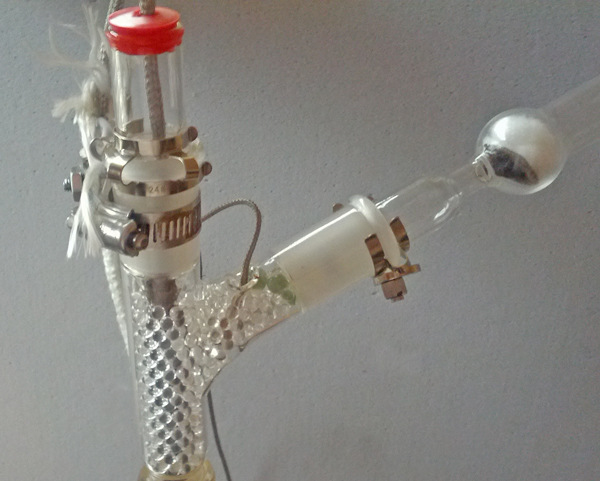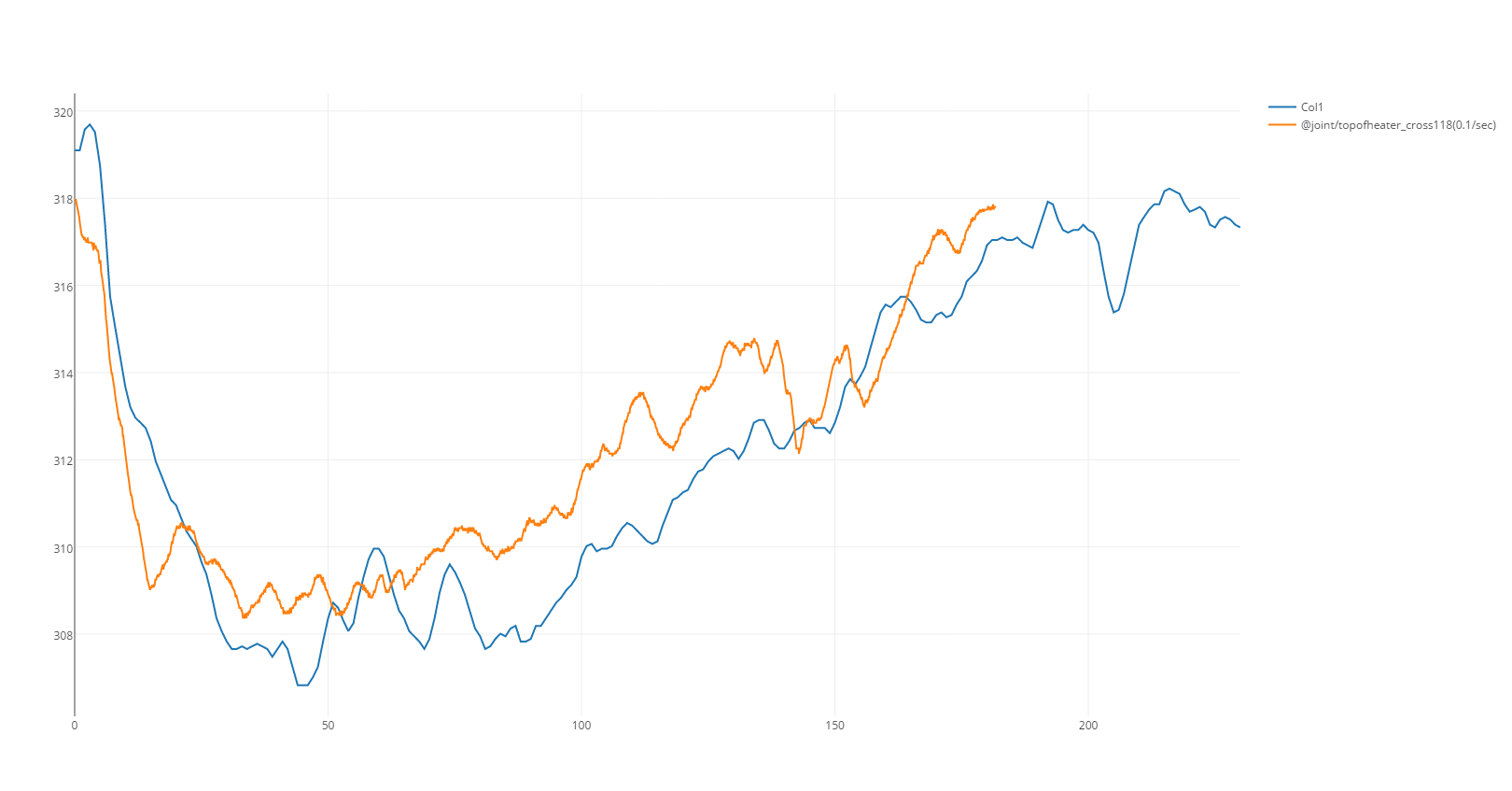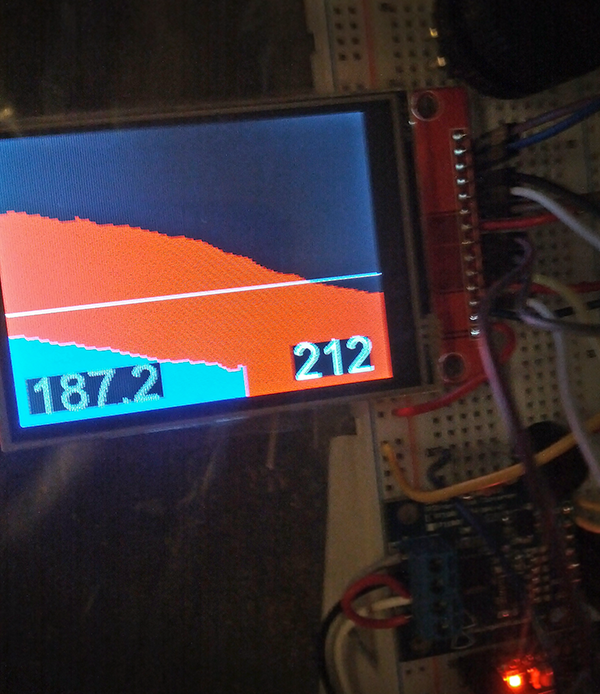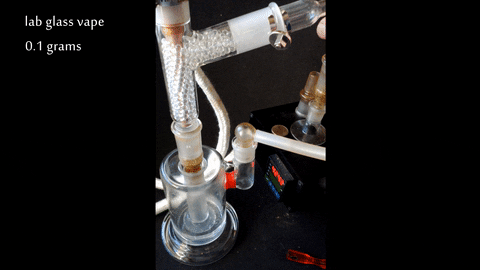Ups and downs...
The normal routine... come home, turn on vape, take a piss...
I returned to the room to find thermal transfer past on the ceiling. *
WTF
The temps on the vape are dropping from around 300F.
WTF
The new glass heater was in place and the inside was also covered in paste. There was a burnt smell.
...
Ok, so the new 300W blew out. I just packed the new glass heater. I was using temporary glass before and baked it down properly.
When I was changing the glass out I had to crack open the temporary glass heater I made. I really had to smash the glass to get the heater out. The paste cooked out to flaky sharp chunks that held the heater in place.
The new glass had fresh paste that was not cooked down.
So I am blaming the failure on either:
when I tried to pull the heater out of the old glass I loosened something
the transfer paste was not cooked down enough do to its job, the heater overheated itself
the paste was absorbed by the cartridge
I can only guess. I was slowly stepping up in temps all week to take it easy on the paste. Tonight I set it to 340F and walked away.
I did learn lots about the pid with the 300w. It made it very easy to see changes to the pid settings.
So back to the old 60w glass heater I made. I slid it into the adapter, put on the stainless keck, and poured in the beads. Wiring it was easy with the butt splices. This is one of the reason I like my DIY vape: The heater is dry fitted glass. I didn't have to un-glue or unscrew anything to replace the heater and glass. Ok, new rule: keep a spare pre-made glass heater. The adapter and heater is $36 shipped, some paste, and a cork so they aren't that expensive.
I also put in the old pid setting + some new changes based on what I learned from the 300w.
So my old 60w tuned up is acting kinda nice. It is recovering in under a minute and would take 3-5 before inside the old 3-way adapter.
I have not tried the 60w with the custom adapter so there is that. There are 200 more beads in there now and the heater is surrounded.
I am wondering if I should get another 300w. I did use it just fine for a little while. It was also a little scary. I do want a bit more watts. Which road should I take? The pid light is running nonstop with the 60w, on the 300w it blinked very quickly every couple of seconds at stable high temps.
I am thinking a 300w is too strong... it's like being so strong you can break your own arm. Then again it did work fine before I transferred it. UGH.
The cartridge makers say go low as you can go with the watts for longevity.
http://www.tempco.com/cartridge_heaters/HeaterFailureCause.htm
Maybe a 200w is the middle? A 200W costs more than the 300W! WTF
Well I'd like to get something a bit stronger than 60w that is for sure.
On the plus side I just got word back from the glass blower. They are making a new version of the custom 3-way adapter from my crude drawings. If all goes right the temp probe will be inside the glass adapter and... more beads! With the temp probe just outside the cartridge's hotspot I hope to increase the response time. There will still be layer of glass between the probe and the air path, but it will be thinner than the adapter's glass. No more tape if this works. The tape can't go to temps I would like to test and it would be nice to ditch it. BTW custom lab glass adapters aren't that expensive. Much cheaper than replacement glass parts for the big glass desktops on the market. Even US made custom glass is less. Well it's lab glass vs niche glass so it is not the same market.
Well that's enough rambling. My buzz needs a refresh.
* new rule: corks go on top of newly made heater while you cook down the paste. No more peeking. Corks for safety.




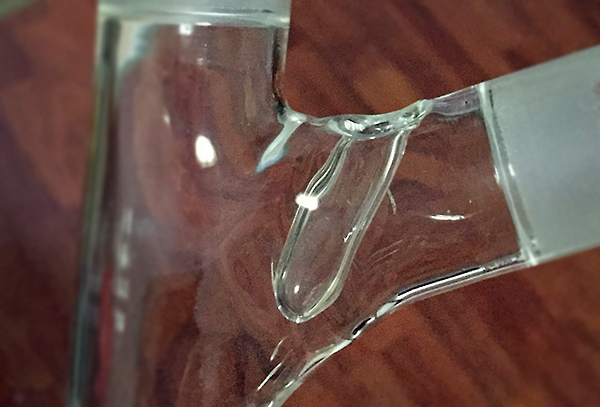
 pretty please?
pretty please?